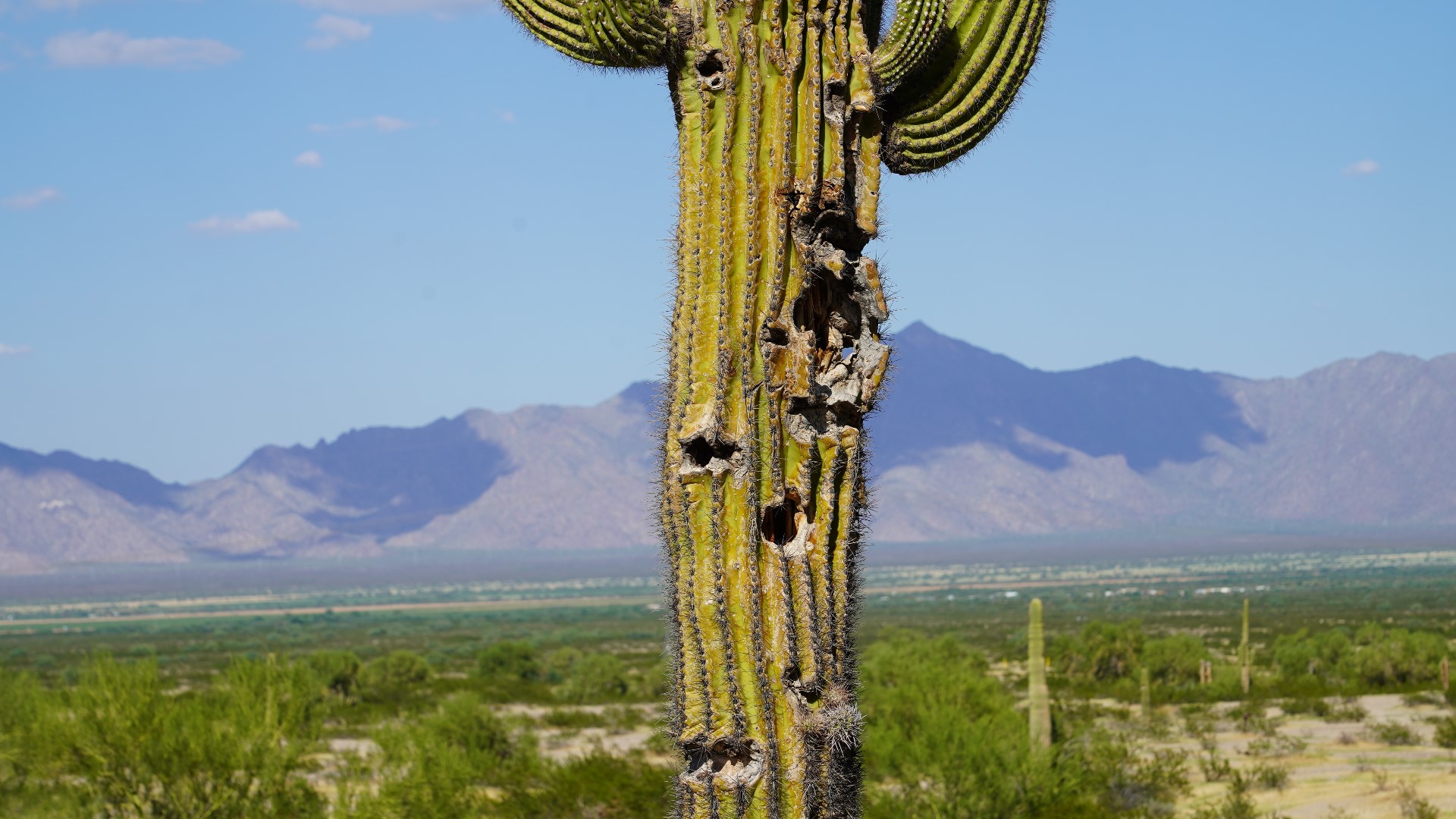PHOENIX — There are parts of the Sonoran Desert where natural majesty collides with modern arsenals. There, one can find an abandoned washing machine shot full of holes, sitting next to a saguaro that shared the same fate.
In other parts, petroglyphs that once marked the trails of indigenous tribes have been spray-painted over and blasted off the rock by buckshot.
For some people, it doesn't matter that these ecological and cultural artifacts have stood for hundreds of years: they're just targets.
Down south of Interstate 8, the Sonoran Desert National Monument's past is under fire by the present.
The monument contains almost half a million acres of public land under the supervision of the Bureau of Land Management (BLM). Target shooting is allowed on almost all of that land.
But now, a settlement with groups like the Sierra Club Grand Canyon Chapter has the BLM reconsidering that policy as gunfire-related destruction continues to plague the monument.

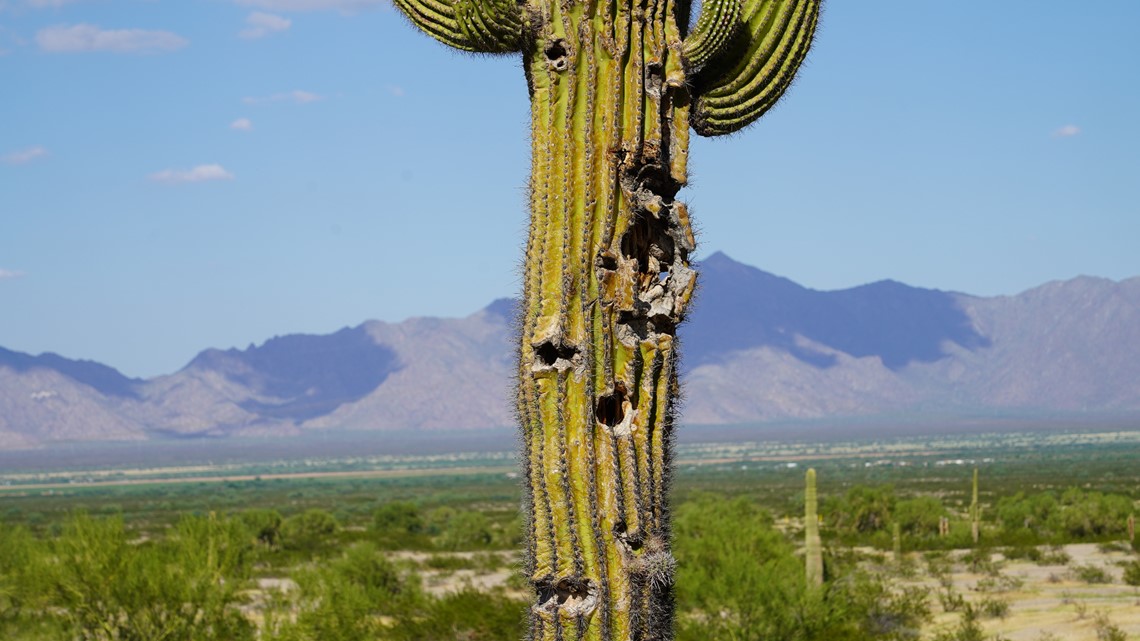
Target shooting in the monument: 'It seems to be a free for all'
The Sonoran Desert National Monument sits just southwest of Phoenix. It was established in 2001 to protect the untrammeled majesty of the most biologically diverse desert in North America.
There are three distinct mountain ranges and an extensive saguaro cactus forest in the monument. It's home to mule deer, javelina, bobcats, and over 200 species of birds including raptors and owls. The monument also hosts a diverse spread of reptiles, as well as endangered species like the Sonoran pronghorn and lesser long-nosed bat.
The monument contains roughly 486,400 acres of public land. Target shooting is allowed on 435,700 acres, just under 90 percent of the monument.
But that restriction might not be enough.
Russ McSpadden is a photographer with the Center for Biological Diversity, and he's been working to document the damages caused by recreational target shooting in the monument.
Early in September, McSpadden spent a day driving and hiking around the monument, documenting the damage that shooting sites were causing.
"I was out there, there's no clear marking that I could see anywhere, designating if target shooting is allowed or not," he said. "It seems to be a free for all."
He said he found at least a dozen sites with significant damage to the landscape during a seven-hour hike. Finding these sites isn't hard to do when the damage makes them stick out from the wilderness like a sore thumb.
"You might turn a corner and there's a shooting site and, you know, hundreds and hundreds of bullet casings laying all over the ground and there's glass, there's beer bottles up on the rocks that are shot and shattered," he said.

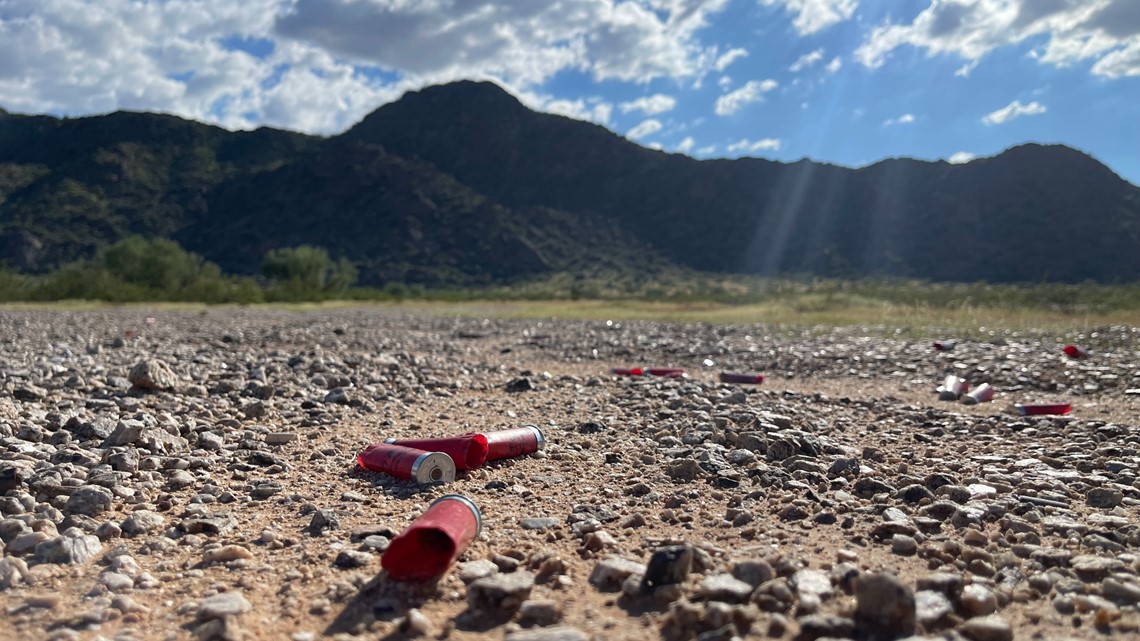
Many of these target shooting sites are so full of bullets that lead levels in the area are high enough to pose a health hazard.
A spokesman with the BLM confirmed that the bureau has "suspended volunteer cleanups at known target shooting sites in the Phoenix district because the cleanups had the potential for participants to directly handle lead waste."
It's not just trash left over from target shooting that's causing problems.
McSpadden has seen saguaros that were at least a century old "blasted with buckshot or pierced all the way through by bullets." He's found ancient rock faces that have been stripped clean by gunfire.
"You're looking sort of like at the internal bone structure of these rocks. And it's, it's really pretty horrific."
Some of those rocks were home to ancient petroglyphs and pictographs that dated back at least 1,000 years. Most of those carvings and paintings were surviving cultural artifacts created by members of the Hohokam tribe that lived in the area.
Now, they've been ground to dust by gunfire.

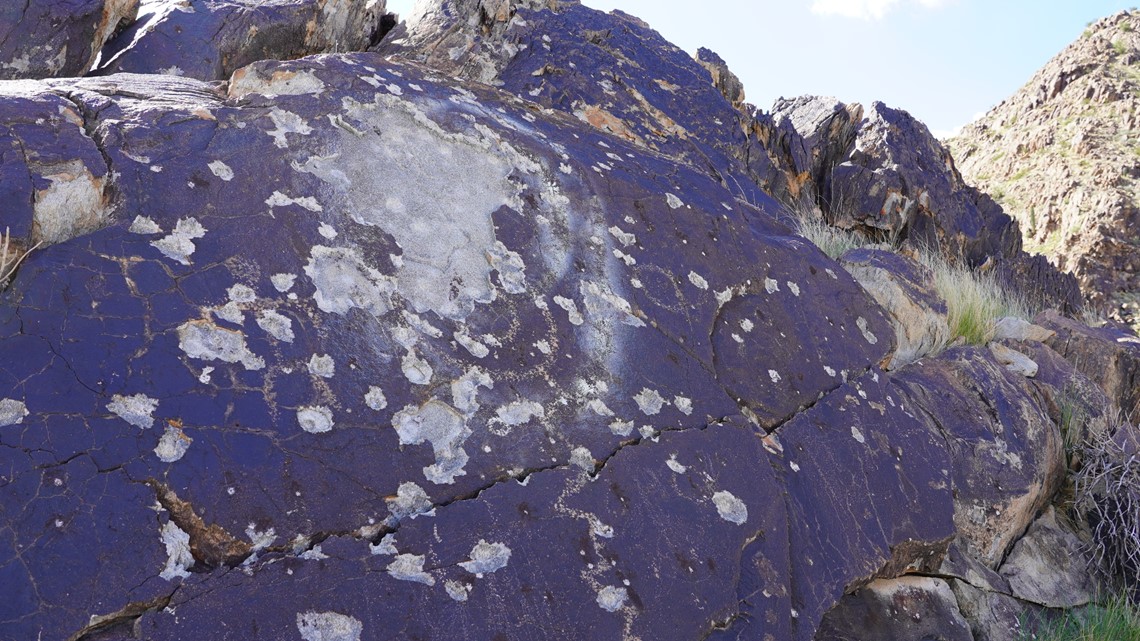
It's illegal to use these cultural relics as a target for recreational shooting. But the rocks that they were carved on often make for tempting backstops.
In some cases, the damage to petroglyphs seems like an accidental consequence of placing targets in front of the stones. However, some of the damage seemed disturbingly deliberate.
"[This site] had very clear petroglyphs, and it had a target spray painted over it," Russ said. "And it was blasted to smithereens."
Petroglyphs aren't the only objects of the monument being affected.
It's a felony offense to shoot or deface a saguaro cactus since they and the petroglyphs are classified as "objects of the monument." These iconic symbols of the state are punched full of holes around otherwise permitted shooting sites.
Damage to cultural heritage sites and the rich Sonoran environment continues to grow. The problem has gotten severe enough that a 2022 legal settlement has the BLM re-examining its policies.
Involvement from the National Rifle Association
This isn't the first time that the BLM has had to make a decision about target shooting in the Sonoran Desert National Monument.
In 2012, the BLM finalized a resource management plan that allowed shooting on 100 percent of monument land. However, a 2015 court order required the BLM to reanalyze the impact of that allowance.
Revisions to the plan that were considered included restricting target shooting to certain areas, or banning it outright from the monument.
Three years later in 2018, the bureau finalized a new resource management plan that disallowed shooting on 10 percent of the Sonoran Desert National Monument's land. The BLM said that the restriction was to ensure public safety in the most heavily visited areas of the monument.
Critics of the decision pointed out that groups like the National Rifle Association (NRA) put heavy pressure on the BLM to continue to allow target shooting despite the bureau's findings that the practice was causing significant harm.
The NRA took public credit for the BLM's 2018 decision, saying:
"This pressure from groups representing so many millions of Americans looks like it changed what could have been a land management decision of the BLM that would have diminished the recreational opportunities of Americans to lawfully target shoot on public lands."


In August, the NRA sent an alert to its members urging them to submit comments to the BLM "in opposition to any recreational shooting access closure."
12News asked the NRA if the organization felt it had an ethical responsibility to address the damage caused by the shooting on the monument. NRA spokesman Lars Dalseide gave the following statement:
"Responsible outdoorsmen and women have long followed the tradition of leaving the area better than they found it. That's true when it comes to fishing a stream, hiking a trail, or target shooting in the desert. The NRA has always encouraged members and supporters to follow that example along with any relevant local, state, and federal laws when enjoying the great outdoors."
12News also asked the NRA what it was doing to discourage target shooting-related destruction, and what proposals it had for the BLM to address and police illegal activity.
"Plans to address this matter should originate with the law enforcement authorities designated to protect these resources," Dalseide said.
Dalseide also emphasized that the NRA "has no enforcement authority."
Recreational target shooting is allowed on roughly 95 percent of public land managed by the BLM. Likewise, the bureau is currently constructing five designated recreational shooting sites near Phoenix for responsible outdoorsmen and women to enjoy.

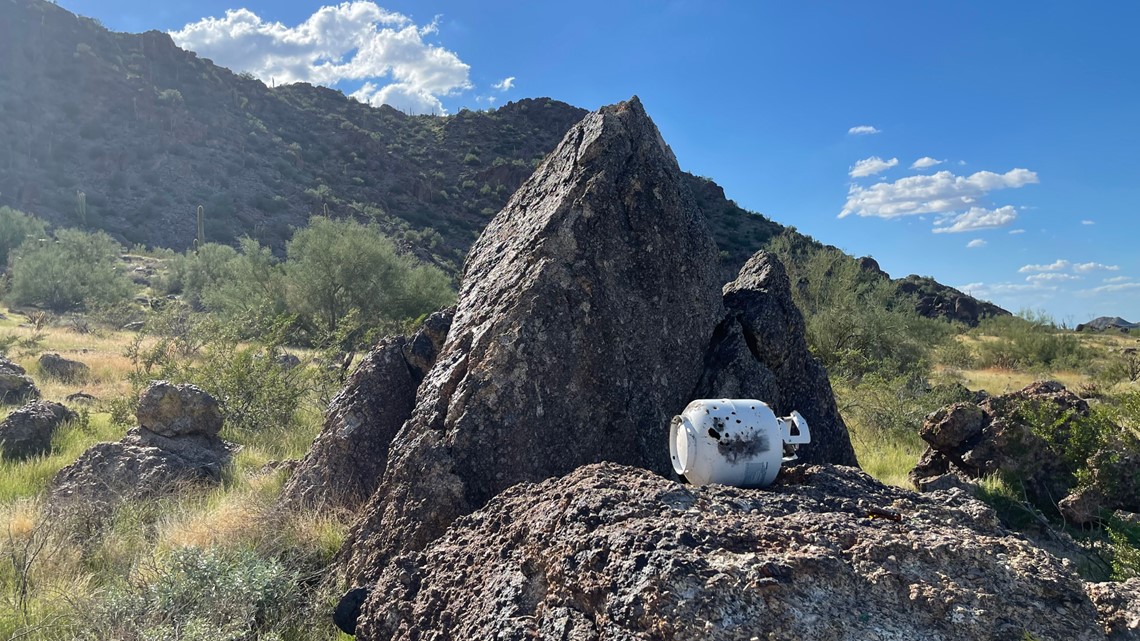
The 2022 settlement and BLM's next steps
In April 2022, the BLM entered into a settlement to resolve litigation concerning the agency's 2018 management plan decision. One group that challenged the agency was the Sierra Club, a prominent environmental rights organization.
Sandy Bahr, the director of the Sierra Club Grand Canyon Chapter, said the 2018 decision contradicted the BLM's own findings on the damage that target shooting caused.
"Key to us challenging the resource management plan and how it treated recreational shooting was the fact that The Bureau of Land Management itself had documented that there was a lot of harm from recreational shooting," Bahr explained.
A BLM spokesman confirmed that, as part of the settlement, the agency would be conducting a suitability analysis to determine if target shooting was "consistent with [monument objects'] proper care and management."
The Sierra Club was one such group that had been prohibited from volunteer cleanup of target shooting sites due to hazardous levels of lead.
"The Bureau of Land Management has found that it has a number of sites on the lands that it manages that have very high levels of lead [...] We don't want to effectively have toxic soils on our national monuments on lands that are supposed to be better protected," Bahr said.
In order to refine its plan moving forward, the BLM held a 30-day public scoping period to gather responses and identify issues facing the Sonoran Desert National Monument.
Although the scoping period closed on Sep. 23, the agency is holding public meetings as it continues to seek input on issues, potential alternatives, and planning goals regarding target shooting in the monument.
"Upon completion of the proposed plan amendment and environmental assessment, the BLM will select an alternative that manages recreational shooting while protecting monument objects and public health and safety," the agency said in a statement.
Interested parties can register for the Oct. 12 and Oct. 13 meetings via Zoom. The meetings will also be recorded and posted to the BLM Arizona YouTube channel.
The agency will continue to gather comments for 15 days after the final meeting. Comments can be submitted to the agency's website, or emailed to BLM_AZ_SDNMtargetshooting@blm.gov.
We ❤ Arizona
Explore amAZing people, places and things across our state on our 12 News YouTube playlist here.

